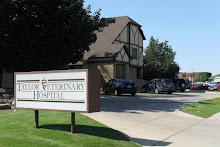Leptospirosis is a zoonotic disease (a disease that can be transmitted from animals to humans) that is found in many wildlife reservoirs, such as deer, raccoons, rats, skunks and opossums. The disease is caused by a spiral shaped bacteria and is transmitted through urine, venereal transfer, across the placenta from mother to fetus, bite wounds, and ingestion of infected meat.
The most common route of transmission is from a carrier animal into stagnant or slow moving water to a dog. Late summer and fall have a higher incidence of disease cases due to the optimal temperatures occurring at this time of year. After only one day of infection, the bacteria begins to attack many organ systems including kidney, liver, spleen, central nervous system, eyes and genital tract. Clinical signs noted at home range from fever, little to no appetite, vomiting, diarrhea, and reluctance to move. Death due to dehydration and organ failure can happen quickly.
Confirmed diagnosis of this disease is important because of the potential risk to all humans having contact with the affected pet. Unfortunately diagnostic lab tests that give a quick result have been difficult to interpret and have unreliable results. The reliable blood tests require several weeks time to confirm a diagnosis and this disease does not allow this kind of time to treat. Treatment must begin immediately based on history and clinical signs.
Treatment for Leptospirosis involves supportive care to treat dehydration and support the organs being threatened. Antimicrobial drugs are administered initially to stop the organism from multiplying and then continued for at least three weeks to stop the carrier state and chronic disease.
Prevention of Leptospirosis is very important. We are seeing an increase in the number of cases of this terrible disease in the Cedar Valley and have updated our vaccination protocal to address this change.
Initially two types, or serovars, of Lepto were believed to cause the majority of disease. They were icterohaemorrhagiae and canicola. After veterinarians began vaccinating for these two serovars the incidence of the disease went down. However the initial vaccine did not protect against all of the serovars of Lepto and soon the incidents of disease caused by these extra types began to rise also. There are more current vaccines now that protect against four of the serovars of Lepto. Now the vaccine for Lepto also includes the serovars, grippotyphosa and pomona. For this reason, your veterinarian may be asking you to bring your dog in for a Lepto booster to boost your dogs immunity to these additional serovars and give your dog
more complete protection against this deadly disease.
Elizabeth Bixby, DVM
Monday, October 17, 2011
Subscribe to:
Post Comments (Atom)


No comments:
Post a Comment